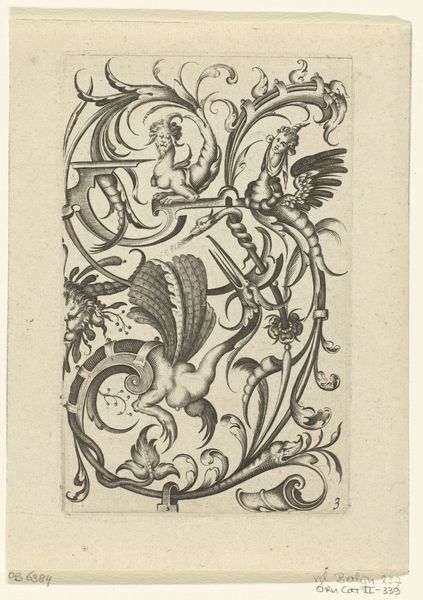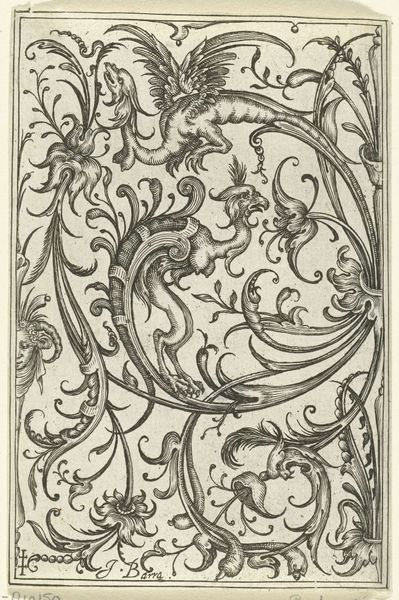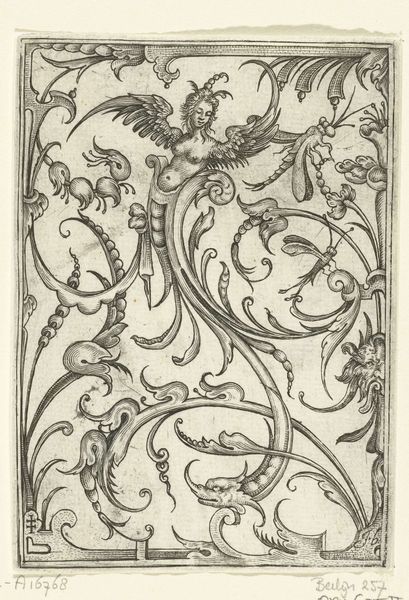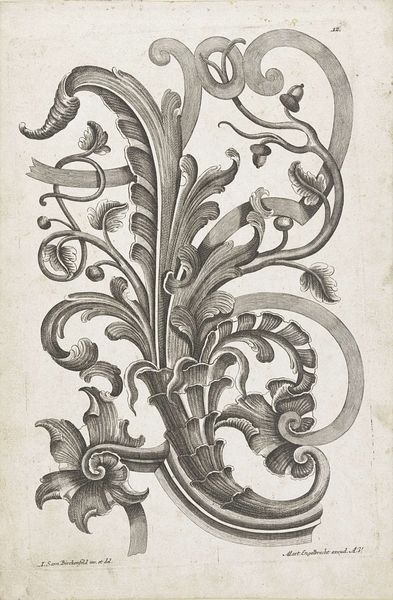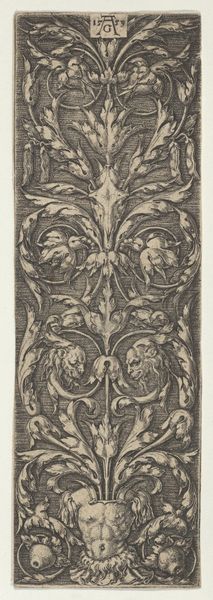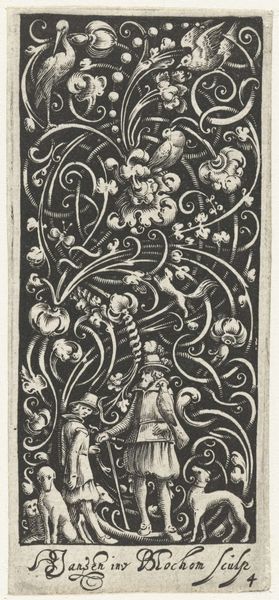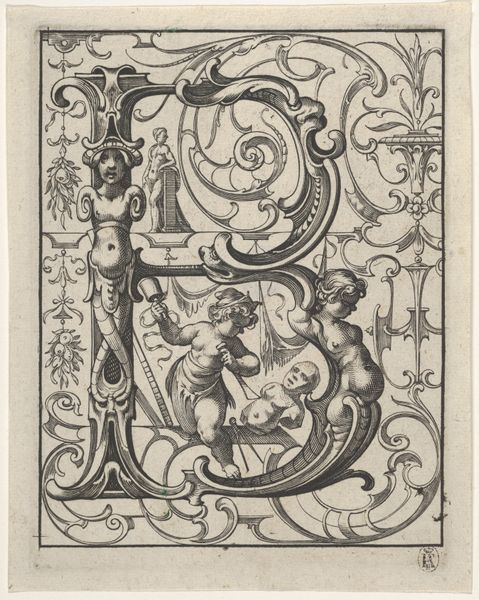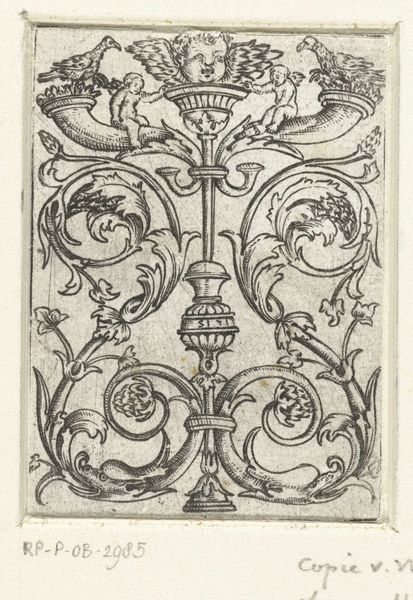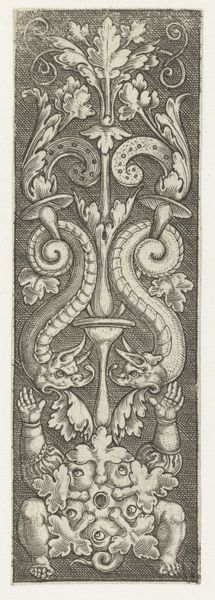
drawing, ink, engraving
#
drawing
#
cross hatching
#
pen drawing
#
form
#
ink
#
pen-ink sketch
#
line
#
northern-renaissance
#
engraving
Dimensions: height 139 mm, width 40 mm
Copyright: Rijks Museum: Open Domain
Editor: Here we have *Fries met bladranken*, a decorative frieze of foliage made with ink around 1470-1500, credited to Meester PW van Keulen. It looks like an engraving, and what strikes me first is the incredible detail achieved with line and cross-hatching. What do you see when you look at this piece? Curator: I see a testament to the evolving role of craft and the burgeoning print market in the late 15th century. Look at the technical skill involved in producing such fine lines and intricate patterns. This wasn't necessarily 'high art' in the traditional sense, but a commodity produced for a specific purpose. What might that purpose be, do you think? Editor: Maybe for decoration, like wallpaper or architectural details? I’m guessing they were printed and then applied to surfaces. Curator: Exactly. The affordability and replicability of prints revolutionized access to visual culture. The design itself also tells a story. The use of foliage reflects a renewed interest in the natural world during the Renaissance. How might the rise of mercantile capitalism affect this artwork and others from this time? Editor: So, maybe increased trade introduced new plant species or new markets for decorative arts, influencing both the subject matter and production of prints like this one? The printmaking itself also created its own networks, where artisans learned from each other, experimented with different tools, and spread methods around. Curator: Precisely! It's not just about aesthetic appreciation; it’s about understanding the material conditions and social forces that shaped its creation and dissemination. Understanding all the networks involved truly contextualizes it. Editor: I'm starting to see how analyzing the production reveals a completely different aspect of the artwork. Curator: Yes, the "how" and "why" of its creation often reveal more than the "what." Considering all those influences really puts the image and its making in perspective.
Comments
No comments
Be the first to comment and join the conversation on the ultimate creative platform.



